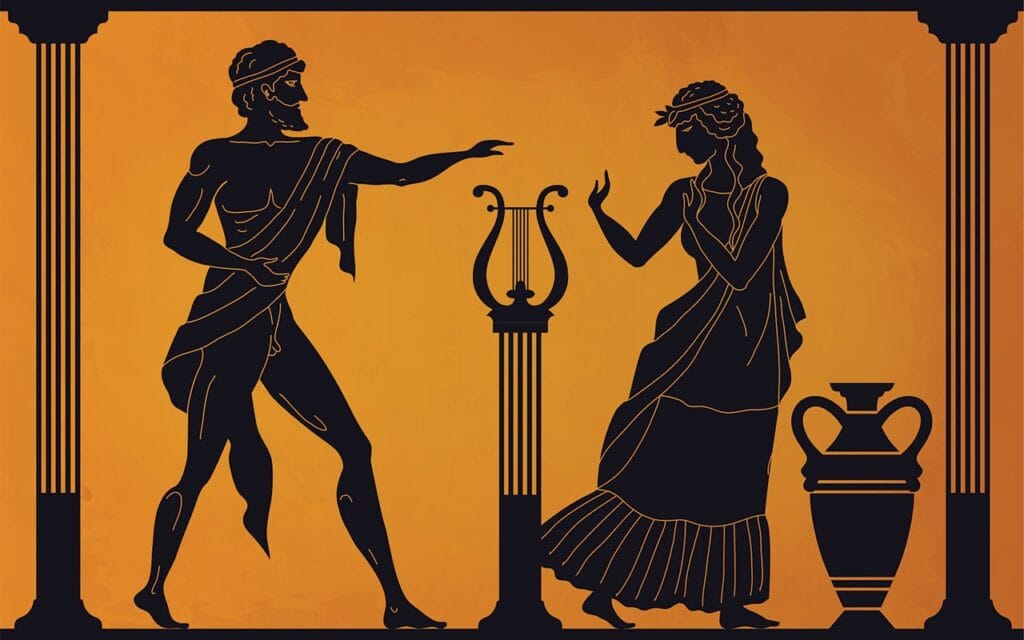In the vast world of Greek mythology, Asteria stands out as a luminescent figure, both literally and metaphorically. Her story, though often overshadowed by more prominent deities, shines with its own unique brilliance, reflecting the celestial beauty and enigmatic allure of the stars. This article delves into the origins, mythology, symbolism, and enduring legacy of Asteria, the Titaness of the stars.
Origins and Lineage
Asteria, whose name translates to “of the stars” or “starry one,” is a Titaness, a member of the second generation of divine beings in Greek mythology. She is the daughter of the Titans Coeus and Phoebe, who were associated with intelligence and prophecy, respectively. This illustrious lineage places Asteria in the heart of the divine family tree, linking her to some of the most powerful and revered gods in Greek mythology.
Asteria’s siblings include Leto, the gentle Titaness who would become the mother of the Olympian twins Apollo and Artemis. The close familial bonds among these deities highlight the interconnectedness of the divine realm in Greek mythology. Asteria’s heritage imbues her with an aura of wisdom and mystery, as well as a deep connection to the celestial and prophetic realms.

The Pursuit by Zeus
Asteria’s life was marked by her resistance to the advances of the king of the gods, Zeus. According to myth, Zeus, known for his numerous amorous pursuits, desired Asteria and sought to claim her. However, Asteria was determined to maintain her autonomy and purity. In a desperate bid to escape Zeus’s relentless pursuit, she transformed herself into a quail and leaped into the Aegean Sea.
This act of transformation and flight is significant in several ways. Firstly, it underscores Asteria’s resourcefulness and determination to evade Zeus’s unwelcome advances. Secondly, the choice of a quail as her transformed state is symbolic. In Greek mythology, birds often represent freedom and the soul’s ability to transcend earthly confines. Asteria’s transformation into a quail speaks to her desire for freedom and her spiritual resilience.
As she plunged into the waters, Asteria metamorphosed into the island of Ortygia, which later became known as Delos. This transformation not only provided her with sanctuary but also set the stage for one of the most important events in Greek mythology.
Asteria and Delos
The island of Delos holds significant importance in Greek mythology. It is the birthplace of Asteria’s sister Leto’s children, Apollo and Artemis. According to myth, Leto, pregnant with the twins, wandered in search of a safe place to give birth, as Hera, Zeus’s wife, had forbidden her from giving birth on any mainland or island. Delos, as a floating island, provided the perfect refuge.
By transforming into Delos, Asteria not only found sanctuary from Zeus but also provided a sacred space for the birth of these two major Olympian deities. Apollo, the god of the sun, music, and prophecy, and Artemis, the goddess of the moon, hunting, and chastity, are central figures in Greek mythology. Their births on Delos imbued the island with sacred significance, and it became a major religious, political, and cultural center in the ancient Greek world.
The sanctuary on Delos was renowned for its temples, altars, and statues dedicated to Apollo and Artemis. Pilgrims from across the Greek world would visit the island to pay homage to these deities, participate in religious festivals, and seek oracles. Delos’s transformation from a barren rock to a bustling religious center is a testament to Asteria’s enduring influence.

Symbolism and Legacy
Asteria’s story is imbued with rich symbolism. Her association with the stars and the night sky underscores her ethereal and mysterious nature. Stars, often seen as guiding lights in the darkness, reflect Asteria’s role as a beacon of resistance and transformation. Her story is a powerful reminder of the human spirit’s capacity to overcome adversity and seek refuge in the face of overwhelming challenges.
Asteria’s transformation into an island is also deeply symbolic. Islands, by their very nature, are isolated and self-contained, representing both refuge and solitude. Asteria’s metamorphosis can be seen as a symbol of steadfastness and endurance, providing refuge and safety for herself and others. Her transformation into Delos allowed her to escape Zeus’s pursuit and provided a sacred birthplace for Apollo and Artemis, underscoring her role as a protector and nurturer.
Asteria’s legacy, though not as extensively chronicled as that of other deities, remains significant. She represents themes of autonomy, resilience, and the divine feminine’s power. Her story is a testament to the strength and resolve of women to control their own destinies, even in the face of overwhelming challenges. Asteria’s tale is a powerful reminder that even in the vast expanse of mythology, every star has its own unique and shining story.
Asteria in Modern Culture
In contemporary times, Asteria’s name and story continue to inspire. She appears in various works of literature, art, and even astronomy. The asteroid 658 Asteria, discovered in 1908, is named in her honor, ensuring that her connection to the stars remains unbroken. This celestial tribute reflects the enduring fascination with Asteria’s story and her symbolic association with the night sky.
Moreover, Asteria’s tale has found resonance in modern feminist interpretations of mythology, highlighting her as a figure of female empowerment and self-determination. Her story of evading Zeus’s advances and transforming into an island to protect herself is seen as a powerful metaphor for women’s resilience and autonomy. Asteria’s refusal to be subdued by patriarchal forces and her ultimate transformation into a place of sanctuary and birth align with contemporary themes of empowerment and resistance.
Asteria’s influence can also be seen in popular culture, where she occasionally appears in novels, films, and television series that draw on Greek mythology. These modern retellings often emphasize her strength, independence, and connection to the stars, bringing her story to new audiences and ensuring that her legacy endures.

As Radiant As The Stars
Asteria, the radiant Titaness of the stars, may not be the most famous figure in Greek mythology, but her story is one of profound beauty and strength. Her celestial legacy and the symbolism of her transformations continue to captivate and inspire, proving that even in the vast expanse of mythology, every star has its own unique and shining story. Asteria’s tale of resilience, autonomy, and celestial beauty serves as a timeless reminder of the power of myth to convey enduring truths and inspire new generations.






